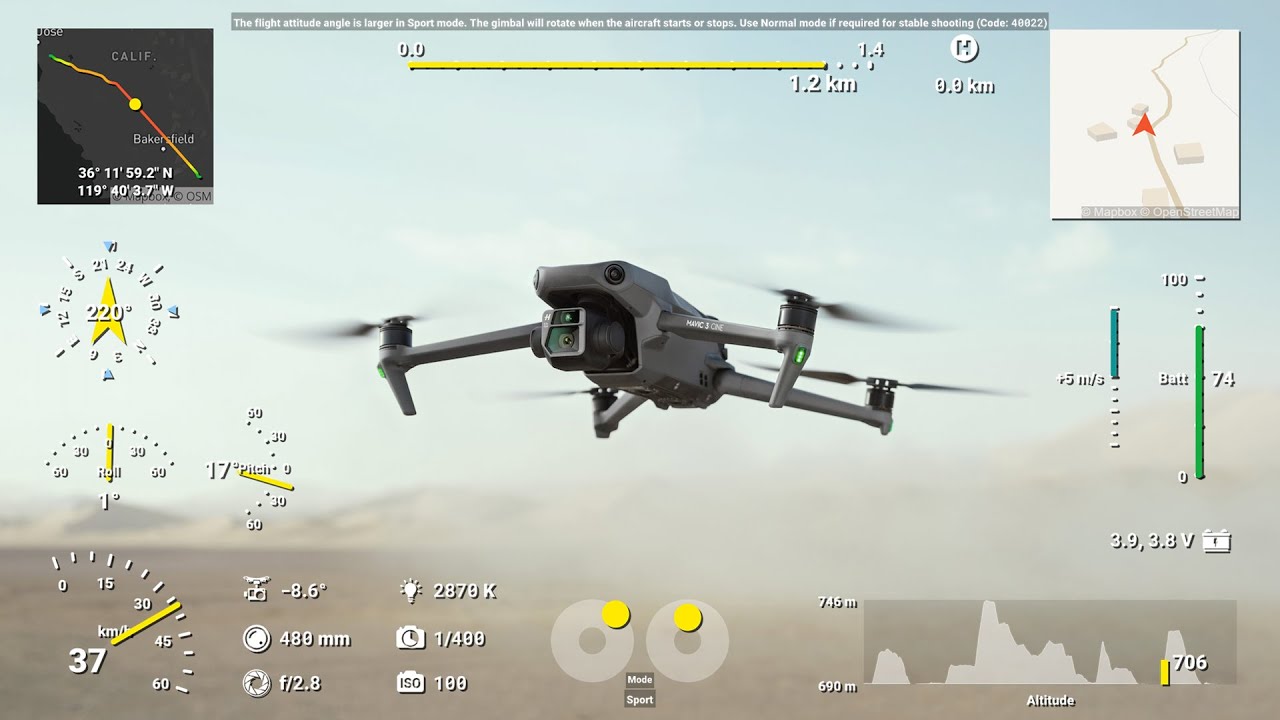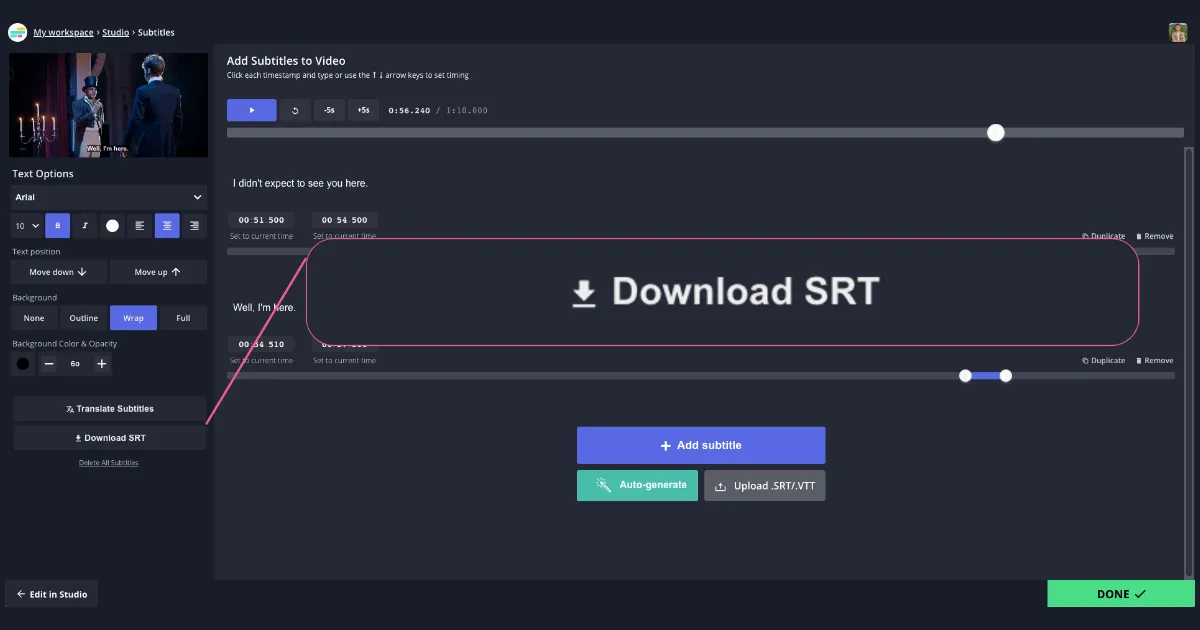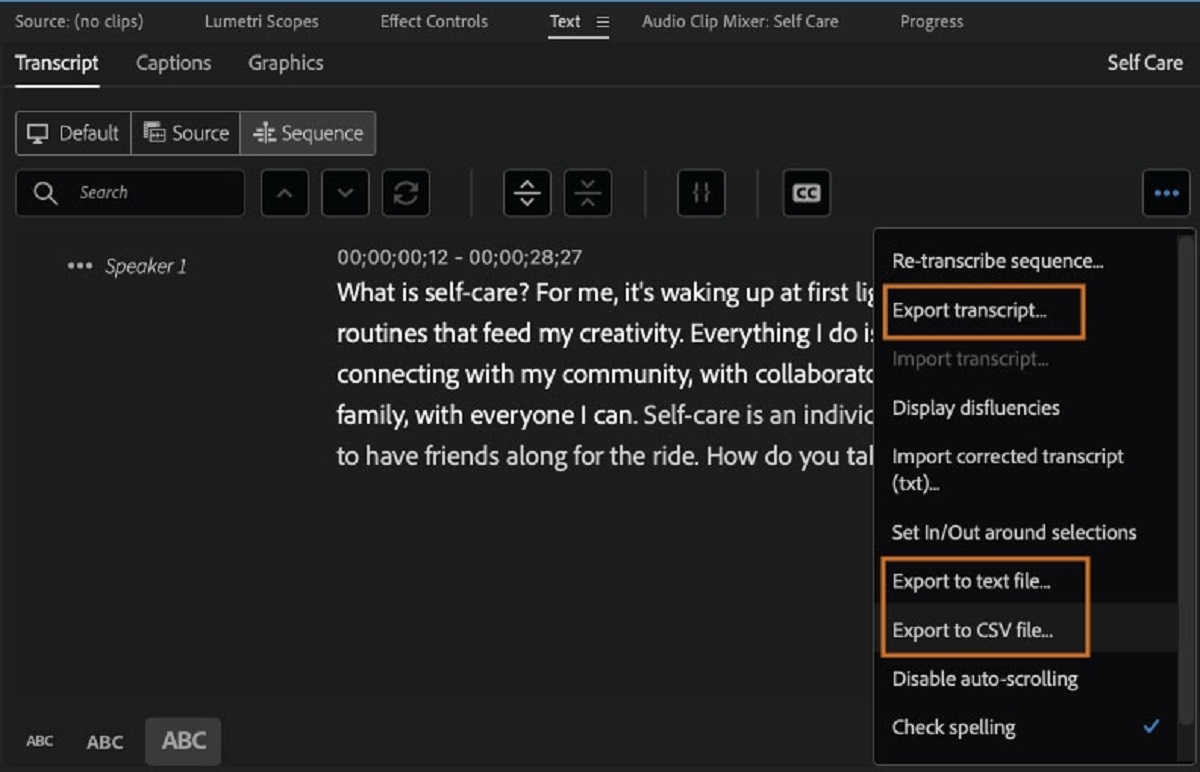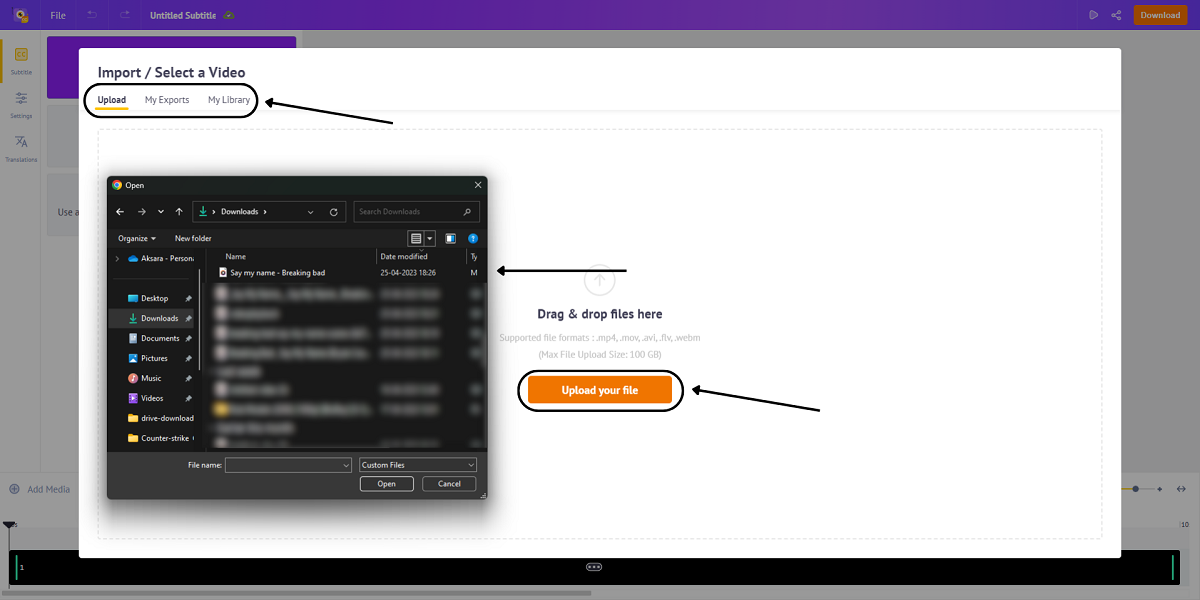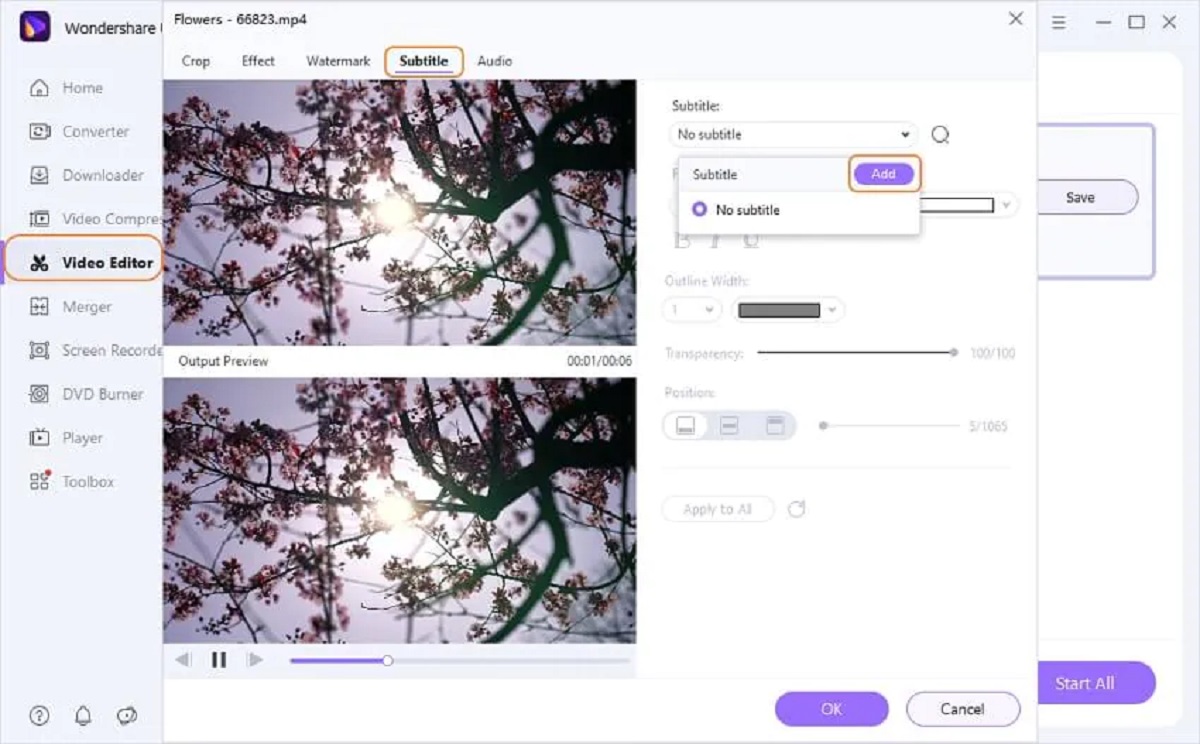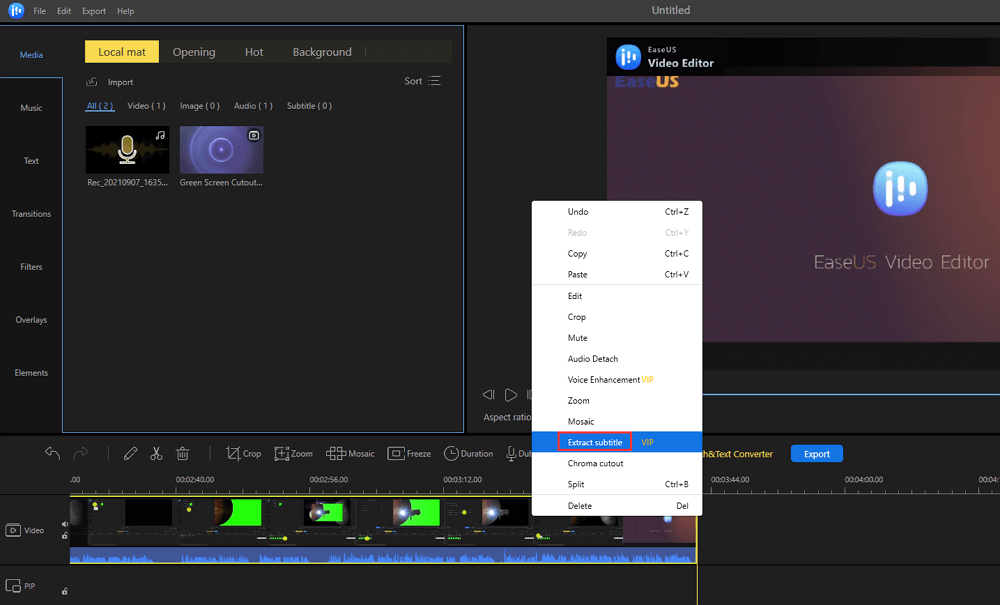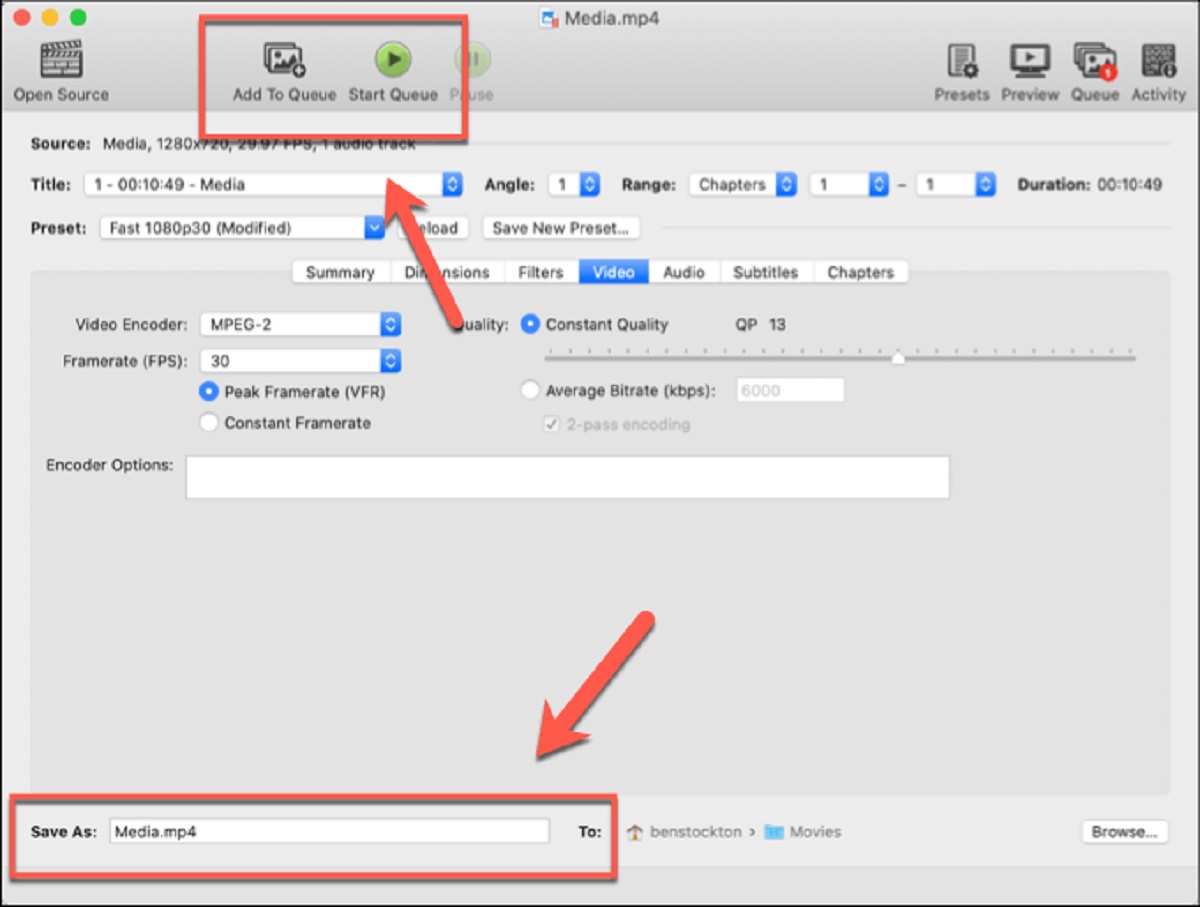Introduction
When it comes to creating and editing videos, having accurate and synchronized subtitles is essential. Subtitles not only make videos accessible to a wider audience but also enhance the overall viewing experience. If you are familiar with video editing, you may have come across different subtitle file formats. One such format is the DJI SRT file.
A DJI SRT file is a type of subtitle file specific to DJI drones and their respective camera systems. DJI, a leading drone manufacturer, developed this format to provide drone operators with a convenient way to add subtitles to their aerial footage. This file format is widely used in the drone industry and is compatible with popular video editing software.
To understand the importance of DJI SRT files, it is crucial to know how they are created and why they are necessary. In this article, we will delve into the intricacies of DJI SRT files, explore their creation process, discuss their significance, compare them to other subtitle formats, and learn how to use them effectively.
Whether you are a professional videographer or an enthusiastic drone operator, understanding how to use DJI SRT files can significantly enrich your video projects. So, let’s dive in and explore the world of DJI SRT files!
What is a DJI SRT file?
A DJI SRT file is a subtitle file format specifically designed for use with DJI drones and their camera systems. SRT stands for “SubRip Subtitle” format, which is a popular format widely used for adding subtitles to videos. However, DJI SRT files are slightly different from standard SRT files.
The main difference lies in the metadata that is embedded within the DJI SRT file. DJI drones capture crucial flight details and camera information along with the video footage. When generating a DJI SRT file, this metadata is combined with the subtitle data. This means that the subtitles are synchronized precisely with the video frames while also displaying valuable information such as timecodes, altitude, speed, GPS coordinates, and more.
The inclusion of this metadata in DJI SRT files brings several advantages. Firstly, it allows viewers to have a more immersive experience by providing context relevant to the drone flight and camera parameters. For instance, it can display the altitude at which the footage was captured, the speed at which the drone was flying, or even the drone’s GPS coordinates during a particular shot.
Furthermore, DJI SRT files can be incredibly useful for professionals who need accurate data for analysis, virtual reality simulations, or other applications. This additional information can be utilized to extract insights, create detailed flight logs, or even recreate the drone’s flight path in a 3D environment.
It is important to note that DJI SRT files can only be generated by compatible DJI drones and their camera systems. These files are typically automatically created during the video recording process, making it convenient for drone operators to have synchronized subtitles and metadata without the need for manual intervention.
In the next section, we will delve into the process of creating DJI SRT files and how drone operators can utilize this feature to enhance their video projects.
How is a DJI SRT file created?
Creating a DJI SRT file is a straightforward process that is seamlessly integrated into the video recording workflow of DJI drones. When you enable the subtitle feature on a compatible DJI drone, it automatically generates an SRT file alongside the recorded video footage.
To create a DJI SRT file, follow these steps:
- Ensure that you have a DJI drone with a compatible camera system that supports the subtitle feature. Not all DJI drones have this functionality, so it’s important to check the specifications of your specific model.
- Open the DJI drone’s settings menu and navigate to the subtitle settings section.
- Enable the subtitle feature and configure any additional settings, such as the font style, size, and color.
- Start recording your video footage as you normally would. The DJI drone will automatically capture the necessary metadata along with the video frames.
- Once you stop recording, the DJI SRT file will be generated and saved to the same location as the video file. The filename typically matches the video file but with the .srt extension.
It’s important to note that DJI SRT files are specific to each video file generated by the drone. This means that if you delete or move the video file, the associated SRT file will also be affected. Therefore, it’s recommended to keep both files together in order to maintain synchronization.
After the DJI SRT file is created, you can use it with various video editing software that supports SRT subtitles. Simply import the video file and the corresponding SRT file into your chosen editing software, and the subtitles will be automatically synced with the video frames.
In the next section, we will explore the importance of DJI SRT files and how they can enhance the overall video viewing experience.
Why is a DJI SRT file important?
A DJI SRT file serves a crucial role in enhancing the overall video viewing experience for both casual viewers and professionals. Here are some reasons why DJI SRT files are important:
1. Accurate Subtitles: DJI SRT files provide precise synchronization between subtitles and the corresponding video frames. This ensures that viewers can read the subtitles at the exact moment they are spoken or relevant to the visual context. The accuracy of DJI SRT files eliminates any confusion or frustration due to delayed or mismatched subtitles, allowing for a seamless viewing experience.
2. Flight Details and Camera Metadata: DJI SRT files go beyond regular subtitle files by incorporating essential metadata related to the drone’s flight and camera settings. This additional information, such as altitude, speed, GPS coordinates, and more, adds a layer of context and enhances the understanding of the video content. It allows viewers to gain insights into the technical aspects of the footage and provides valuable data for professionals who require accurate flight information.
3. Immersive Experience: By displaying flight details and camera metadata, DJI SRT files create a more immersive experience for viewers. They can visualize the drone’s flight path, understand the altitude at which certain shots were captured, or even appreciate the speed at which the drone was maneuvering through various scenes. This additional context adds depth to the viewing experience, making it more engaging and captivating.
4. Analysis and Documentation: For professionals in fields such as aerial surveying, inspection, or cinematography, DJI SRT files hold immense value. The metadata embedded within these files can be used for analysis, documentation, or even recreating the flight path in 3D modeling software. This level of detail and accuracy enables professionals to extract meaningful insights, generate comprehensive reports, or simulate scenarios with precision.
5. Compatibility and Ease of Use: DJI SRT files are widely supported by popular video editing software, making them easily accessible and customizable. Having a standardized subtitle format specific to DJI drones ensures seamless integration with editing workflows. This compatibility allows users to edit, adjust, or stylize the subtitles according to their preferences, ensuring a seamless and visually appealing end result.
In summary, DJI SRT files are important because they provide accurate subtitles, include valuable flight and camera metadata, enhance the overall viewing experience, offer analysis and documentation capabilities, and are compatible with popular video editing software. Whether you are a casual viewer or a professional drone operator, DJI SRT files play a significant role in elevating the quality and accessibility of video content.
How to use a DJI SRT file?
Using a DJI SRT file is a straightforward process that requires compatible video editing software and the corresponding video footage captured by a DJI drone. Here are the steps to effectively use a DJI SRT file:
1. Choose Compatible Software: Ensure that you have video editing software that supports SRT subtitle files. Most popular video editing tools, such as Adobe Premiere Pro, Final Cut Pro, and DaVinci Resolve, have native support for SRT files. These software options allow you to import the video footage and the corresponding DJI SRT file for further editing.
2. Import Video Footage: Open your chosen video editing software and import the video footage that was recorded using a DJI drone. You can typically do this by selecting the import option and navigating to the location of the video file. Make sure that the DJI SRT file is saved in the same location as the video file for seamless synchronization.
3. Import DJI SRT File: After importing the video footage, locate the subtitle or caption settings in your video editing software. In most cases, you can find these settings under the “Effect” or “Subtitle” tab. Select the option to import the DJI SRT file, and the software will automatically synchronize the subtitles with the video frames.
4. Adjust Subtitle Settings: Once the DJI SRT file is imported, you can make adjustments to the subtitle settings in your video editing software. This includes modifying the font style, size, color, and positioning of the subtitles to ensure readability and visual appeal. Experiment with different settings to find the best fit for your video project.
5. Preview and Fine-Tune: Before finalizing your video, preview it to ensure that the subtitles are accurately synced with the video frames. Make any necessary adjustments, such as timing corrections or subtitle position changes, to maintain proper synchronization and alignment. This step is crucial to ensure that the subtitles enhance rather than distract from the video content.
6. Export the Final Video: Once you are satisfied with the subtitles and overall video editing, export the final video with the embedded DJI SRT file. Choose the desired export settings, such as resolution and format, depending on the intended use of the video. Your video editing software will generate the final video file with the synchronized subtitles.
Following these steps will enable you to effectively use DJI SRT files in your video projects, ensuring accurate and synchronized subtitles that enhance the viewing experience.
DJI SRT file vs. other subtitle formats
While DJI SRT files are specifically designed for DJI drones and their camera systems, it’s essential to compare them with other popular subtitle file formats to understand their unique features and benefits. Here’s a comparison of DJI SRT files with other subtitle formats:
1. SRT: The conventional SRT (SubRip Subtitle) format is widely used for adding subtitles to videos. Unlike DJI SRT files, standard SRT files do not include any embedded metadata. They solely focus on providing synchronized subtitles with timecodes. While SRT files are compatible with various video editing software, they lack the additional flight details and camera metadata offered by DJI SRT files.
2. SUB/IDX: This subtitle format is commonly used for DVDs and older video formats. SUB/IDX files consist of two separate files: the SUB file contains the actual subtitle text, while the IDX file contains the timing and display information. While SUB/IDX is still supported by some software, it is less commonly used compared to SRT and DJI SRT files.
3. ASS/SSA: ASS (Advanced SubStation Alpha) and SSA (SubStation Alpha) formats offer more advanced subtitle features such as font styling, text effects, and multiple subtitle tracks. These formats are versatile and widely supported by video editing software. However, similar to SRT files, they do not include embedded flight details and camera metadata like DJI SRT files.
4. WebVTT: WebVTT (Web Video Text Tracks) is a format specifically designed for web-based video playback. It supports basic subtitle features such as timing and text formatting. While WebVTT files are compatible with HTML5 video players, they lack the additional metadata and flight details provided by DJI SRT files.
5. TTML: TTML (Timed Text Markup Language) is an XML-based format that supports various subtitle features such as styling, positioning, and even the ability to describe animations or graphics. TTML files offer advanced customization options but do not include the unique flight details and camera metadata found in DJI SRT files.
In summary, DJI SRT files differentiate themselves from other subtitle formats by incorporating embedded flight details, camera metadata, and the ability to provide valuable context to the video footage. While other formats focus primarily on synchronized subtitles, DJI SRT files offer a more immersive viewing experience, enhanced analysis capabilities, and compatibility with popular video editing software. This makes DJI SRT files particularly beneficial for drone operators and professionals in fields like aerial surveying, inspection, and cinematography.
Conclusion
DJI SRT files are a specialized subtitle file format that brings enhanced functionality and context to video footage captured by DJI drones. By incorporating flight details and camera metadata, these files provide viewers with a more immersive experience and offer valuable insights for professionals in various industries.
The creation of DJI SRT files is seamlessly integrated into the video recording process of compatible DJI drone models. This ensures accurate synchronization between subtitles and video frames and eliminates the need for manual intervention. The inclusion of vital flight information, such as altitude, speed, and GPS coordinates, adds depth and context to the video content.
Using DJI SRT files in video editing software that supports SRT subtitle formats allows for further customization and adjustment. Professionals can fine-tune the subtitle settings, such as font style, size, and color, to align with their creative vision. Additionally, the compatibility of DJI SRT files with popular video editing software ensures a seamless integration into existing workflows.
Compared to other subtitle formats, such as SRT, SUB/IDX, ASS/SSA, WebVTT, and TTML, DJI SRT files stand out with their embedded flight details and camera metadata. While other formats may offer advanced customization options or compatibility with different playback methods, they do not provide the unique context and analysis capabilities of DJI SRT files.
Whether you are a casual viewer who wants to enjoy accurate subtitles and an immersive experience or a professional drone operator who requires precise flight information, DJI SRT files offer a valuable solution. They enhance the overall video viewing experience and provide essential insights for analysis, documentation, and simulation.
As the drone industry continues to evolve, the importance of accurate subtitles and embedded metadata cannot be underestimated. DJI SRT files fulfill this need, allowing drone operators to showcase their footage with synchronized subtitles and detailed flight information.
So, the next time you use a DJI drone and want to add subtitles to your aerial footage, remember the power and value of DJI SRT files. Embrace this specialized subtitle format and elevate your video projects to new heights.







